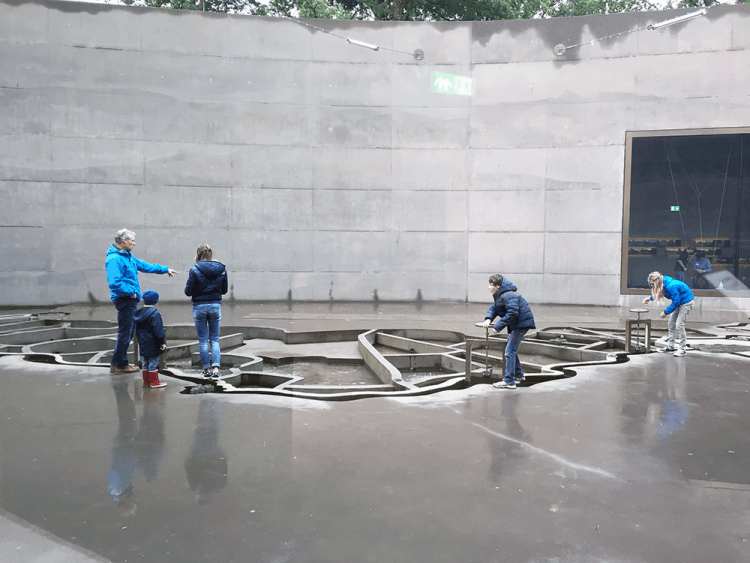Going Underground: Waterline Museum near Utrecht

In October, the Dutch Waterline Museum near Utrecht was opened. Designed by Anne Holtrop, the museum documents the history of the “waterlines”, a peculiar Dutch military defense system. Holtrop created an equally poetic and minimalist museum building – which is entirely buried in the ground.
The New Dutch Waterline is a 85 km long military defense line, reaching from Amsterdam to the Rhine estuary. Built between 1815 and 1870, it consists of 46 forts and hundreds of locks and sluices. In case of an invasion, a broad strip of land in front of the line could be flooded hip-deep, making it impermeable for soldiers and horses. The system was in use until airplanes made it redundant during World War II.
Holtrop approached the museum design by tracing the topographic lines at the core of the hilly fort site and then drawing a rectangle around this shape.
The museum rooms are arranged in a circle around a large patio with 8 metre high curving concrete walls. On the ground is a 50 metre long walk-on model of the Waterline, which visitors can inundate by turning water wheels and opening or closing miniature locks.
All this remains invisible from the entrance of the fort, because the museum is buried in the hill and has no exterior façades, its entrance hidden in the back wall of an old barracks building. But when one climbs the grassy roof landscape and sees it from above, the layout of the Waterline Museum suddenly becomes clear.

Dutch Waterline Museum near Utrecht, designed by Anne Holtrop
Text by Anneke Bokern, ARCHITOUR
For more information please visit our Destination AMSTERDAM/ROTTERDAM.





No Comments